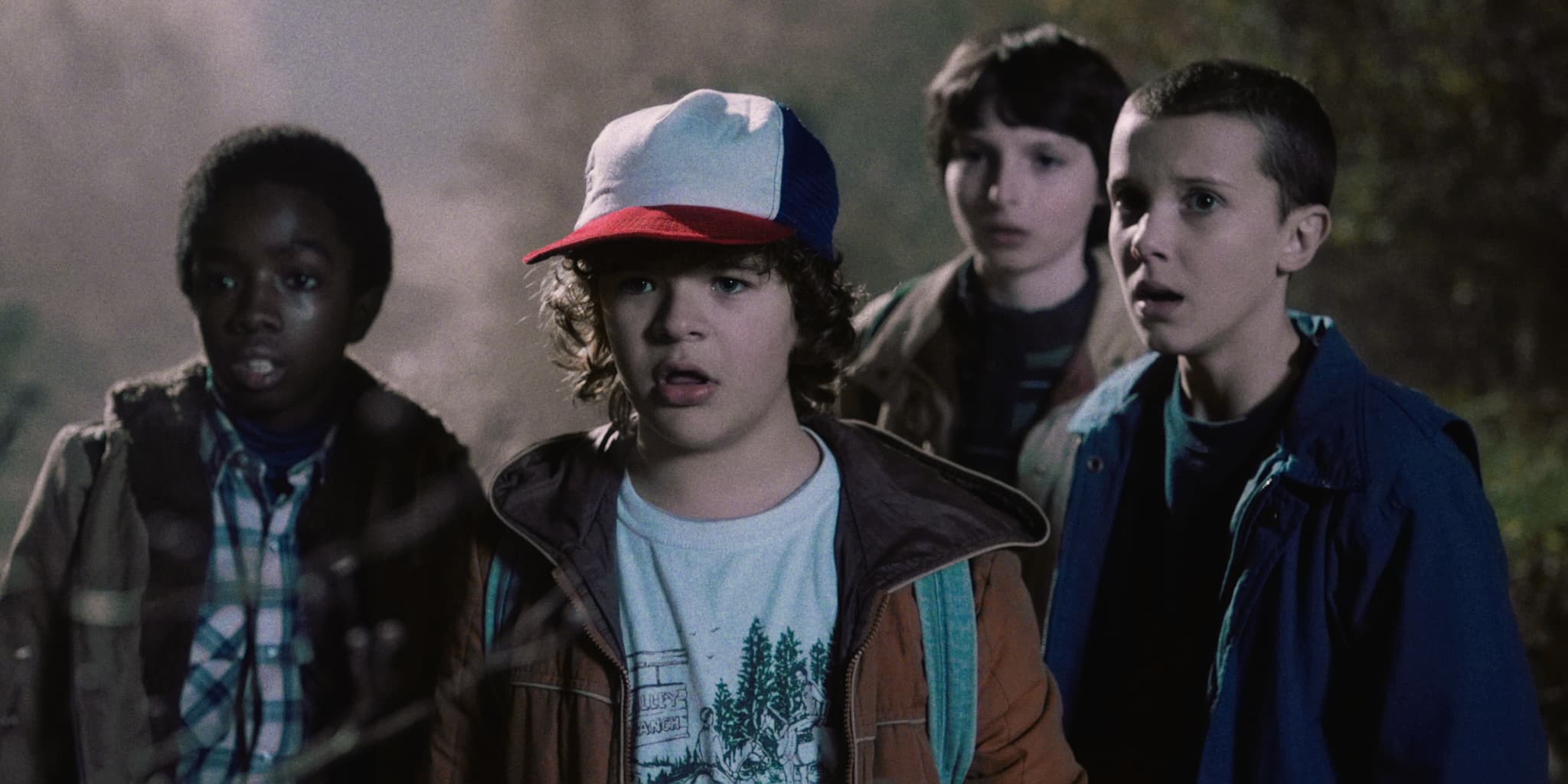Imagine if Stephen King wrote a script that Steven Spielberg directed, and then John Carpenter came along and composed a score for it.
This is Stranger Things.
The new, widely acclaimed sci-fi/horror show that everyone’s been binge-watching on Netflix, is saturated by a thick, highly conspicuous veneer of ‘80s nostalgia. It even goes so far as to meta-cast the decade’s darling, Winona Ryder, and curate an extremely recognizable soundtrack with the likes of The Clash, New Order and Echo & The Bunnymen.
In signature overwrought fashion, Ryder plays Joyce, the frazzled mother of 12-year-old Will (Noah Schnapps), who goes missing after a mysterious creature escapes a top secret government lab. Will’s friends – Mike (Finn Wolfhard), Lucas (Caleb McLaughlin) and Dustin (Gaten Matarazzo) – try to find him using their knowledge of pop science, sci-fi and D&D lore, as well as the help of new friend Eleven (Millie Bobby Brown), a wide-eyed, quiet, feral-like kid whose telekinetic abilities have made her a fugitive from the same government lab (headed by a cold, calculating agent played by Matthew Modine).
When Joyce claims to hear Will through the walls and via electricity, her older son Jonathan (Charlie Heaton) and police chief Jim Hopper (David Harbour) chalk it up to parental grief-laden madness. But as they – and others, including Mike’s older sister Nancy (Natalia Dyer) – begin to encounter their own “stranger things,” they too are roped into the mystery afflicting their sleepy, small town Indiana suburb.
Eleven and the nerdy, close-knit, bike-riding young boys are a composite of The Goonies, Stand by Me and E.T.; the faceless monster and its black goo trail are a direct nod to Alien, while its wall-stretching spooks come from Videodrome; the theme steals its synth aesthetic from Carpenter; and the glinting red title that opens the show is virtually a replica from King’s book covers.
There’s not enough room to account for the hundreds of ‘80s references, but a quick search online should get you multiple A-Z guides. The production design is equally comprehensive and meticulous, from the Rubik’s Cube on Mike’s night-table to The Evil Dead and The Thing posters in the boys’ rooms.
Stranger Things continues a long trend in contemporary pop culture to drench everything in ‘80s nostalgia sauce: Super 8, Midnight Special, It Follows, Pixels, X-Men: Apocalypse and, most recently, the new Ghostbusters. All these movies pay tribute to the influences of their creators. What distinguishes Stranger Things isn’t just the sheer number of nods it incorporates into its eight episodes, but also how it uses these bits of nostalgia to mask its shortcomings.
The references are never softened out; they’re explicit, worn on the show’s sleeves like the retro enamel pins that have recently become popular again. There are so many Easter Eggs that the show is like a lazy couch potato’s version of Pokémon Go – gotta catch’em all, lest you be ignorant! References are conveniently framed in shots, placed for fast detection, GIF-ing and listicle-making. TV critics and culture consumers tweet nothing but their gleeful acts of recognition, because it makes them feel smart. Reviewers rarely discuss the show’s shortcomings: its poor sense of direction, sloppy editing, or repetitive, banal dialogue in the early episodes, for example.
Who cares? The ‘80s are back!
And yet, Stranger Things doesn’t try to do anything interesting or subversive with these never-ending nods. They’re inserted simply to be found. Fittingly, Stranger Things works best when it does its own (stranger) thing, like in the small, uncomfortable moments when Eleven calls Modine’s character “Papa.” But in other scenes, like when The Clash’s “Should I Stay Or Should I Go?” blasts from Jonathan’s stereo, and literally defines Joyce’s mental state as she tries to overcome her fear of the invading monster, the show is difficult to take seriously.
Certainly, that’s part of its appeal. It’s an escape from today’s headlines. We find comfort in the familiar, and seek out distractions from the troubling developments around the world by obsessing over nostalgic phenomena like Pokémon Go and Stranger Things. There just so happens to be no shortage of irony to the fact that we’re finding that escape in a show set in the ultra-conservative era of Reagan/Thatcher politics – a time that is starting to feel increasingly familiar.
But then again, stranger things have happened.

